Are your knees giving you grief during workouts? You’re not alone in this struggle. Let’s explore the root causes of knee pain, pinpointing the trouble spots: the kneecap and the patellar tendon. That uncomfortable crunching sensation, especially during squats? It often stems from kneecap discomfort caused by compression.
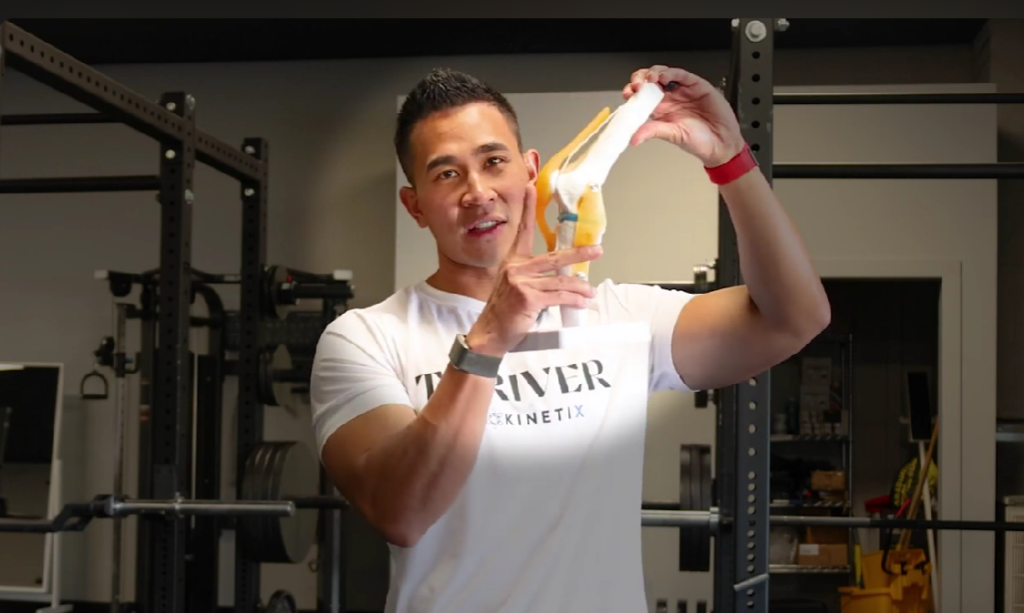
And those nagging pains in the patellar tendon? Tight quads or hip flexors might be to blame, causing tension in the front of your knee. But fret not! This effective squatting technique ensures your kneecap glides smoothly and your patellar tendon finds its ideal position. Follow these 3 easy techniques:
Weight Shifting Techniques
This exercise focuses on executing a squat movement by emphasizing the engagement of the hamstrings, glutes, and maintaining proper form throughout. To perform this exercise:
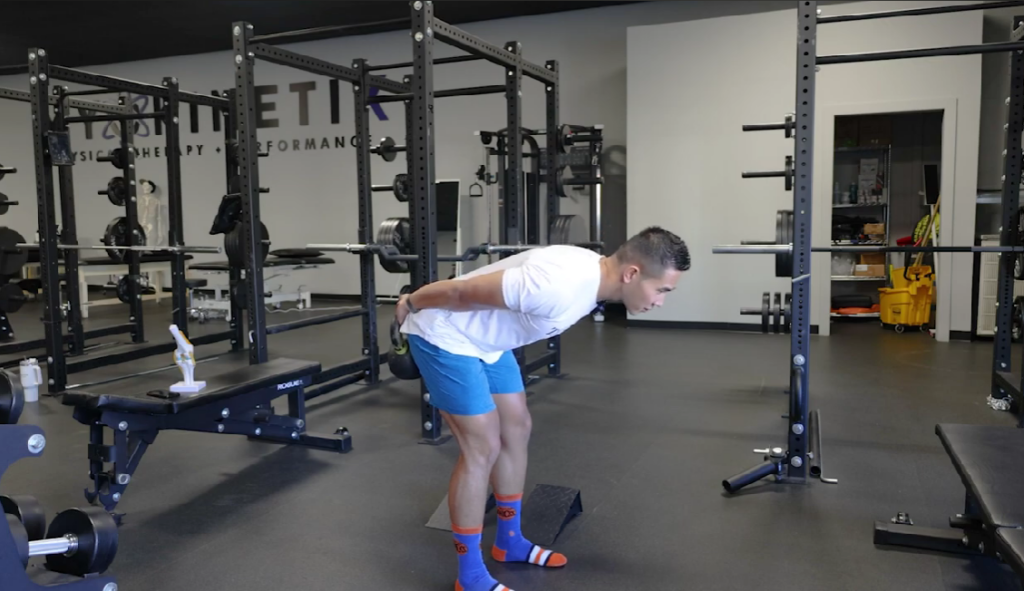
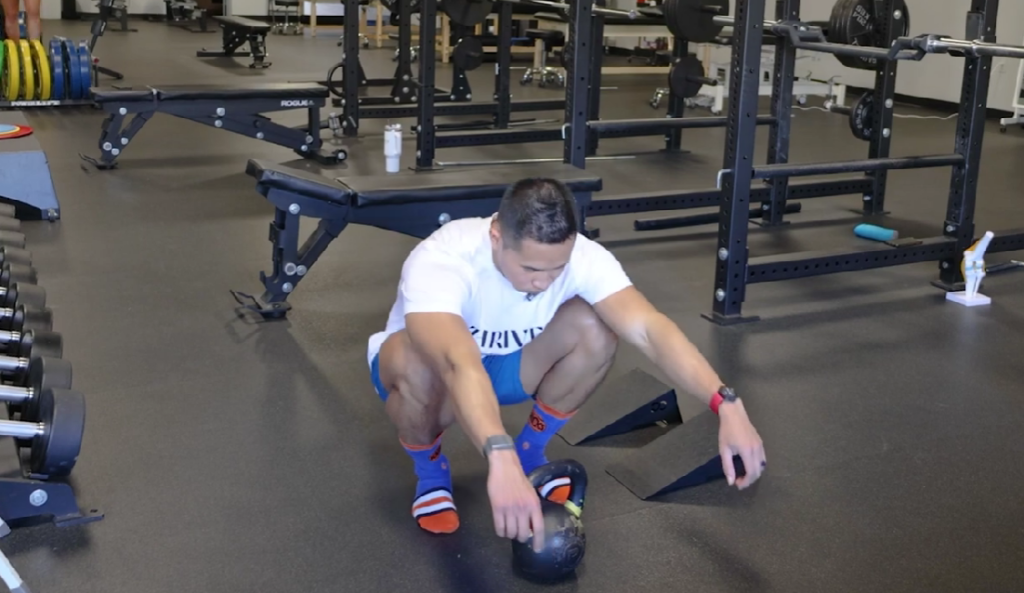
- Set Up
Position kettlebells behind you, stand with your feet shoulder-width apart, and ensure the kettlebells are reachable. Maintain a straight back throughout the exercise.
- Execution
- Hip Hinge: Initiate by pushing your hips back, focusing on engaging hamstrings and glutes. Repeat this movement about 10 times to familiarize yourself with the hip hinge.
- Squatting: Transition into squats, initiating the movement with your hips by pushing them back before bending your knees. Keep tension in your hamstrings and glutes during the entire motion.
- Goblet Squats: Progress to goblet squats, maintaining the same hip-initiated movement pattern. Control the descent and ascent while keeping muscle tension.
- Maintaining Tension
Avoid relaxing at the squat’s bottom. Instead, push into the ground as you rise to maintain tension across muscles. Focus on a straight back to ensure proper stability and avoid injury.
The key here is practicing the hip hinge motion, initiating squats with the hips, emphasizing tension and control throughout the movement, and avoiding relaxation at the bottom to maintain stability and prevent injury.
Kneecap Pain Solutions
To relieve knee pain during squats, prioritize ankle mobility. Restricted ankle dorsiflexion often triggers knee discomfort. When the ankle lacks flexibility, it forces the heel to lift, pushing the knee excessively forward and putting added strain on the knee joint. Follow these steps:
- Assess Ankle Stiffness:
Check ankle flexibility through dorsiflexion; opt for a heel lift if stiffness is noted.
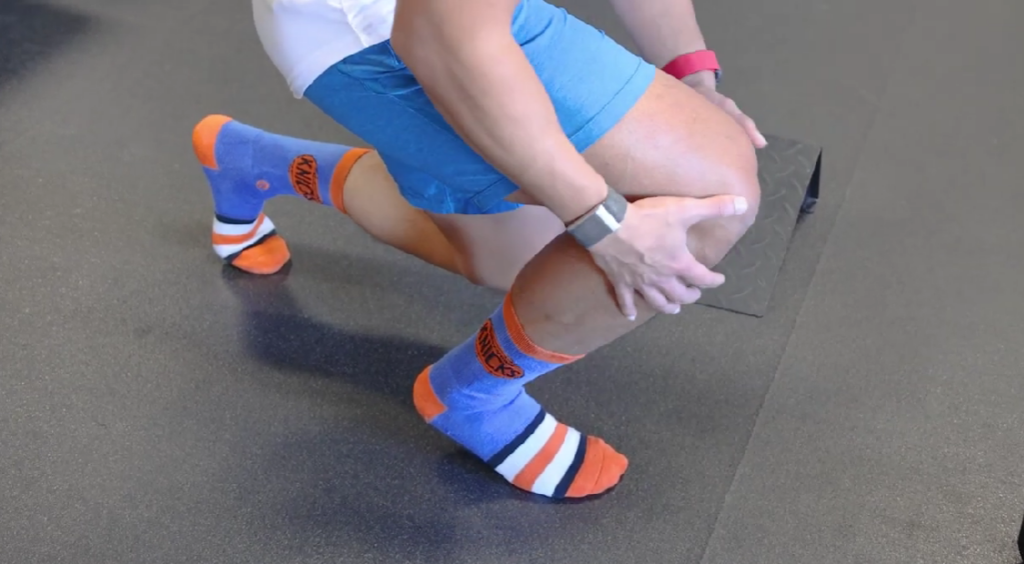
- Choose and Place Heel Lift:
Select wedges or plates and position them under your heels for comfort and balance.
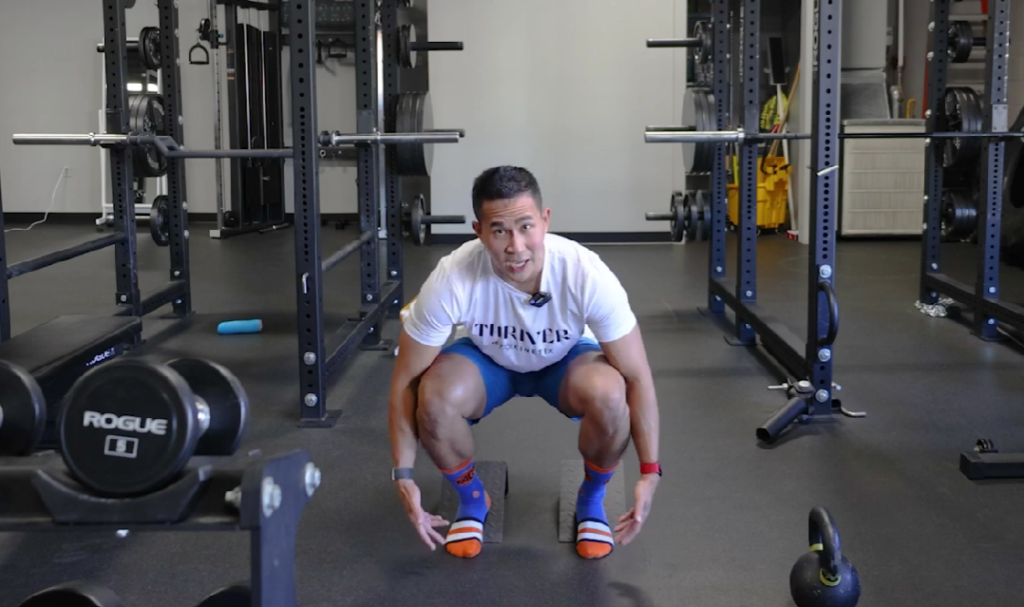
- Controlled Squats:
Start with hips back, engaging glutes and hamstrings and maintain consistent heel push and controlled movements.
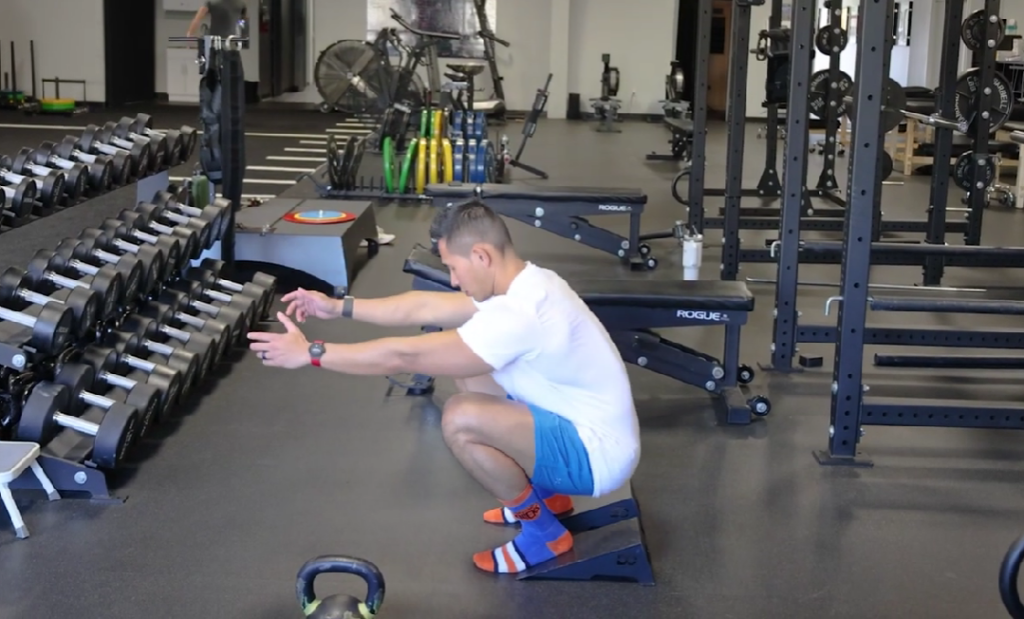
Incorporate a heel lift or wedge to modify your squat technique, easing knee pain linked to ankle restrictions and emphasizing shifting your butt back, pushing into the ground, and maintaining movement consistency for relief.
Tendon Tension Relief
The focus here is on mitigating discomfort associated with limited ankle mobility during squats. Through strategic adjustments in body positioning and the use of a wedge for elevation. This approach emphasizes controlled movements and deliberate ground engagement to alleviate discomfort, reduce knee pain, and enhance your overall squatting experience.
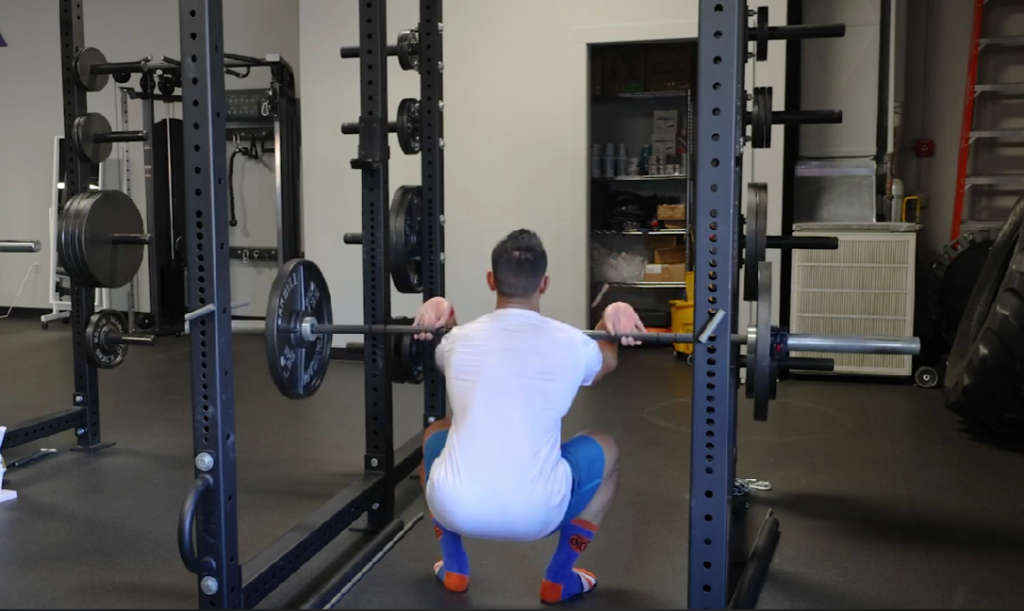
Follow these steps:
- Begin with Ankle Support
Stand with your feet on a raised platform or wedge. Ensure your hips are slightly pushed back and your weight is shifted backward. Push into the ground as you return to the starting position.
- Progress with a Wedge:
If discomfort persists, use a wedge under your feet for added elevation. Repeat the movement—hips slightly back, slow descent, pushing into the ground to return to the starting position.
- Apply to Different Squat Variations:
Implement the same principles for various squat types, such as back squats. Maintain the hip-back motion, controlled descent, and emphasis on pushing into the ground while ascending. Focus on comfort and control rather than maximal depth, adjusting with wedges as needed for relief. Ensure to engage muscles and avoid relaxation at the bottom of the movement to reduce knee pain and maintain tension across the tendons and muscles.
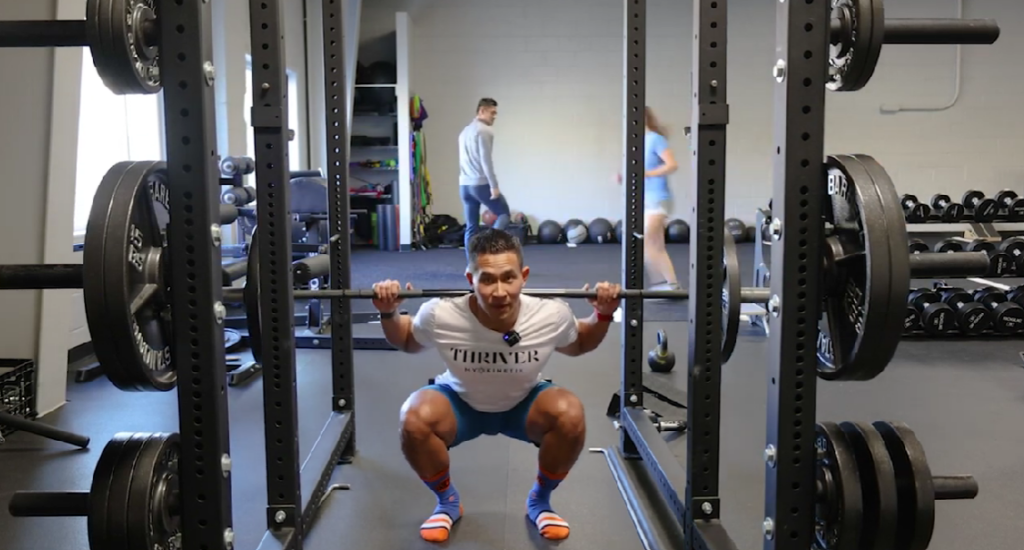
Watch the video demonstration here to start your pain relief journey!
Also, Check out our lower body warm-up video for a holistic approach to knee health. https://youtu.be/iZy9BbNurZU
By integrating these techniques into your workout routine, prioritizing mobility, controlled movements, and muscle engagement, you can unravel knee pain’s mysteries and pave the way for a more fulfilling and pain-free squatting journey. Remember, it’s not just about depth or numbers; it’s about precise movements, comfort, and stability.
At Myokinetix, we’re here to help you heal and move freely. Our cutting-edge facilities are crafted to support your recovery, whether you’re focused on enhancing everyday life or maximizing athletic performance. Let’s embark on this journey toward better health together!
Book a call with us today to start your journey!
